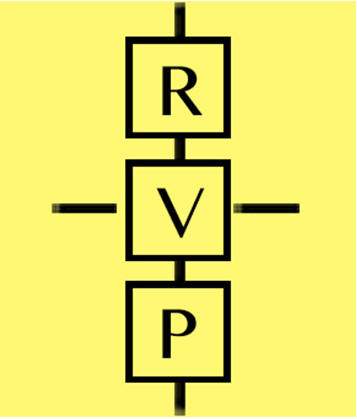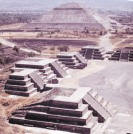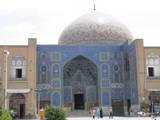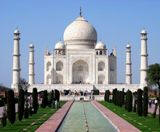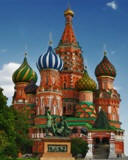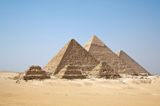|
AN INVITATION
THE ANNUAL
SEMINAR
Culture, Human Rights and Peace
in Central America
September 5 -
November 10, 1985
Washington, D.C.
After a long and
relatively quiet period during which Central America
attracted very little attention beyond its borders, it
has entered a period of great and urgent tensions.
Social, economic and political patterns which had long
prevailed are now called into question. The responses to
these questions range across the spectrum from
revolution to repression, and are accompanied all too
frequently by violence in its many guises. Real progress
seems ambiguous and elusive. In a situation of change,
in which understanding is desperately needed but only
extremists claim clarity, a process of disciplined and
concerned reflection is a pressing need.
Hundreds of
thousands of refugees have fled the region due to
threats imposed by extreme poverty, political repression
and violence. In the last fifteen years, over 100,000
Central Americans have settled in the city of Washington
alone.
In turn, in these
days of global interaction, regional unrest does not
long remain a matter of indifference to other peoples.
Expressing concern primarily about geo-political
considerations, some nations have attempted to influence
events in Central America by intervening through
political, economic and military means. Even beyond such
intended intervention, the normal interchange of
commerce and culture by other countries vitally affects
patterns of development in Central America. Both within
and between nations, such issues have become the basis
for multiple engagements, intense concern, and deep
division. In order to avoid being destructive and to
play a responsible and positive role there is need for
balanced and penetrating insight.
In the midst of
these problems members of the Association of Presidents
of the National Universities of Central America (CSUCA)
visited their sister universities in North America in
the hope of developing a better understanding, and hence
a more appropriate response, to their crisis. In
preparation for their initiative, George McLean visited
each of their Universities. As a response to their visit
a mere informational series of lectures did not appear
to be enough. It seemed that concerned scholars could go
further by pooling their personal competencies in an
intensive 10-week interdisciplinary seminar aimed at
generating better understanding of the issues as a basis
for future interaction. This seminar was sponsored
jointly by CSUCA, represented by Raul Molina, and the
Council for Research in Values and Philosophy (RVP). The
work carried out in the seminar is the basis for this
volume.
The principal
participants were the authors of the several chapters.
The contributors wrote from the perspective of various
disciplines, including anthropology, sociology,
education, political science, economics, philosophy,
theology and literature. Seminar participants met weekly
in order to form a community of understanding in which a
cumulative process of discovery, reflection and insight
could take place. As the seminar progressed, the many
dimensions of a problematic were progressively unfolded.
Participants came primarily from universities in the
Washington area. On occasion, they were joined by other
specialists: an economist from the Interamerican
Development Bank (IDB); a political scientist from the
Wilson Center and the Center for Advanced Study at
Princeton; two anthropologists from international human
rights groups; and a specialist in the methodology of
the social sciences from the Institute of Philosophy of
the Academy of Sciences of the USSR. All added new and
challenging insights.
Interpretative
reports on the pattern of the themes developed in the
course of the discussions were drawn up by the Seminar
Director, George McLean. They have been included in this
volume after the relevant chapters. The first of these,
found after Chapter III, reflects the discussions up to
that point. The sequence of the discussions reflects the
cumulative character of the engagement of the issues and
the deepening of insight. A written interchange between
G. McLean and T. Ready regarding the interaction between
cultural resources and distorted power relations took
place over a number of weeks; it is appended to the
report of the discussion after Chapter III. This
interchange typifies the struggle progressively to
articulate and rearticulate the issues through
interdisciplinary dialogue in search of ever better
comprehension.
The volume, then,
is not simply a collection of disparate essays, but
reflects an effort to work and think together in order
to develop one's insights in response to those of
specialists in other fields. This constituted a true
community of learning stemming from a shared deep
concern for the peoples of Central America. The
organizing concepts, methods, and themes for the volume
are set forth in the first chapter, written by George
McLean, entitled, "Hermeneutics of Cultural Heritage:
Social Critique and Future Construction." McLean raises
the question of how the cultural heritage of Central
America can serve as a foundation for bringing together
conflicting perspectives on Central American culture and
society in such manner as to provide a basis for social
critique and thereby lead to the enhancement of the
dignity of all. In other words, what resources can be
utilized from the ennobling cultural traditions which
Central Americans share to address the changing
realities now emerging?
In Chapter II,
Timothy Ready raises the troubling fact that an
inequitable distribution of social power, originating in
the colonial era and persisting in various forms until
the present, lies at the origin of the alternate
cultural horizons of the parties now in conflict. He
argues that in order to secure peace with justice,
material and political inequality must be dealt with so
as to arrive at a value consensus based upon principles
derived from a common cultural heritage. Only addressing
the inequality which leads to the violation of the most
basic of human rights will make possible a cultural
resolution which can enhance the shared human dignity of
Central Americans as they interact in their communities.
James Riley
reviews the history of Central America in Chapter III
and emphasizes the challenges which they face in
developing viable, functioning nation states. The
problems of the region are considered to be
fundamentally of internal origin, rather than as having
been caused by external forces. He suggests that the
Mexican development of what could be called a populist
authoritarian democracy as a result of its Revolution of
1910, could serve as a model for the smaller Central
American states which now face problems similar to those
faced by Mexico in the early Twentieth Century.
Paul Peachey
discusses in Chapter IV the impact of modernization upon
family structure. One common correlate of modernization
is that domains of life which were addressed within the
realm of the family in traditional societies are now
handled in a more impersonal, bureaucratically organized
manner in modern societies. How adequate are the
institutions organized at the level of the state to
address the needs of individuals in the context of their
communities? How are families and modern institutions
articulated in the various countries of Central America?
Peachey raises the question of similarities and
differences between the Central American and other
regions of the world in the effect of modernization upon
family structure.
In Chapter V the
contribution of Federico Sanz, an economist from the
Interamerican Development Bank, describes the structure
and functioning of the economies of Central America in
statistical terms. He reviews both the transitory and
more permanent features of Central American economies,
and assesses their adequacy in addressing fundamental
human needs in the areas of health, nutrition and
education. He argues that modification of development
strategies and changes in the international trading
system will be necessary in order more adequately to
address the severe poverty and related human tragedies
experienced by the peoples of Central America.
Mario Rojas and
Roberto Hozven both address the central theme of the
seminar by reviewing the poetry and prose of prominent
literary figures. In Chapter VI Rojas discusses the work
of Central American writers of liberation, who impress
upon the consciousness of their nations and the world
the unpublicized drama and tragedies of the oppressed of
their countries. He emphasizes that dialogue among the
various segments of Central American societies must be
the basis for the emergence of a universal sympathy and
concern for the well-being of others. Censorship makes
the establishment of mutual sympathy and understanding
difficult; it contributes to the potential for the
perpetration of violent, and dehumanizing acts and
policies by whichever segment of society is in power.
Hozven, in
Chapter VII, emphasizes the role of the writer as critic
of society. Writers such as Rubén Darío and Ernesto
Cardenal have contributed penetrating commentary on
Nicaraguan society in their respective eras. Both called
attention, in an aesthetically forceful manner, to the
corruption of communication and of the sociopolitical
context in which it occurs. Both write about the
challenge of creating authentic cultural discourse where
the language of the community has been repressed and
perverted.
Hozven draws
attention also to the dissemination of repressive power
in Central American and other societies by means of the
widespread utilization of "arrogant speech." He defines
this as speech which attempts to dominate the other
through erudite references or by the categorization and
subsequent dismissal of what is said by the
interlocutor. He cites Darío's call to put the arrogance
of speech at a distance in order to hear one's own
speech from the viewpoint of the hearer.
Consistent with
the hermeneutic method presented by McLean in the
opening chapter, Hozven calls attention to how the method of
the great literary figures of the region can serve as a
model to emulate in the search for a just peace. The
method is at least as important as the specific message
which the writers have communicated. It is, "to move
from the production of arrogant speech to its
recognition so as to produce the distance which permits
knowledge. This means that we must become the other
through distancing ourselves from the self that we
were."
Henry Johnson, in
Chapter VIII, discusses the appropriateness of various
models of education for the promotion of peaceful
development in Central America. He defines peace as not
merely the absence of conflict, "but the possibility of
a certain quality of life to the achievement of which
education is thought to be ancillary." In the light of
the previous chapters his review of the relationship
between educational systems and the cultures from which
they are derived leads to the startling question of
whether education in any real sense is possible. "Is
there any longer a pedagogically adequate culture?
. . . In other words, given the situation we have been
exploring, educational theory must now begin . . . with
historically grounded sociocultural critique, and
rebuild: it must, so to speak, make itself possible." He
criticizes the dehumanizing trends in modern cultures
taking hold in Central America and in other parts of the
world as tending to de-contextualize knowledge from the
communities in which people live. This leads to
questions regarding the worth of an educational model in
which the primary goal is to train members of society to
perform technical functions in impersonal bureaucratic
systems, whose value remain unquestioned. Johnson
concludes by arguing that an appropriate model of
education is one that emphasizes contextualized
knowledge, as in the study of the arts, rather than one
which uncritically emphasizes "scientific" training to
assume technocratic roles.
Eulalio Baltazar
and Brian Johnstone describe Latin American theologians
as interpreters of culture, just as are the literary
figures discussed by Rojas and Hozven. In addition,
literary figures and liberation theologians both can be
understood to function as prophets in dramatically
describing the ills of their societies and articulating
new vision of reality. In this light and with Johnstone,
Baltazar, in Chapter IX, discusses liberation theology
as a product of the Latin American experience. He
focusses upon the philosophical roots from which
liberation theologians write, and the correspondence of
systems of theology to the societies from which they are
derived.
Brian Johnstone
describes theology as mediating between faith and
interpretations of existing cultural and historical
realities. Hence, it is important to note that the
historical realities which gave rise to the predominant
theologies of Europe differ from those which affect
Central America. Johnstone argues that suffering,
especially the suffering of the poor, is a point of
departure for liberation theology, and that suffering is
an experience with which human beings everywhere can
empathize.
In the discussion
and the subsequent redevelopment of his paper for this
volume, Prof. Hozven carries the theme further through
in-depth literary analysis to show that suffering is not
only a mute and indifferent universal semaphore, but
that in their bodies persons who are violated express
their deepest, and hence culturally most specific,
sensibilities.
In liberation
theology, as Johnstone points out, empathetic
understanding with those who suffer leads to action to
eliminate the sociopolitical causes of that suffering.
But while recognizing the historical and cultural
appropriateness of liberation theology, he suggests its
need for a more elaborate theory of human rights. This,
he believes, would lead to a more adequate theory of
justice and thereby safeguard the human dignity, not
only of groups which have been oppressed, but of all
persons in a society.
The authors
present this volume of their work as a serious effort to
contribute, along with other people of good will, to the
understanding needed to address the challenge of
promoting peace and human rights in Central America.
Their deep realization that much more needs to be taken
into account implies that this volume is also an
invitation to further interchange with CSUCA and
scholars of the universities of Central America.
|

